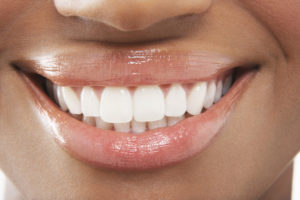Gum Disease

Have questions about gum disease? One of our very own dentists took some time to share information and answer common patient questions to help educate about gum disease and how you can keep from getting gum disease. View the table of contents below to learn more.

The following content was provided by Dr. Cortney Davis D.D.S. and has been medically reviewed for accuracy. Some relevant links have been added to audio transcripts to provide resources for additional information.
Table of Contents:
Click on a question below to be taken directly to that answer and content.
What is gum disease?
The following content was provided by Dr. Cortney Davis D.D.S. Transcription is provided below.
Dr. Cortney Davis:
Well, there are two main kinds of gum disease. The first is gingivitis, which is reversible and it’s characterized by inflammation of the gingival tissue. We normally determine if somebody has gingivitis by bleeding of the gum and just redness of the gum tissue on exam. The second type of gum disease is periodontitis, and periodontitis is irreversible, and it is when you have actual loss of the periodontal attachment. And we determine periodontal disease based on radiograph, if there’s bone loss that we can determine, and also by probing, which is measurements of the gum tissue to determine if there’s attachment loss.
What causes gum disease?
The following content was provided by Dr. Cortney Davis D.D.S. Transcription is provided below.
Dr. Cortney Davis:
So gum disease starts when people have plaque that forms on their teeth, the plaque hardens and becomes tartar, and tartar harbors bacteria. And the bacteria causes an immune response with the person’s body, and then it’s actually the immune response that causes the chronic inflammation and then the gingivitis or periodontal disease. So you need to have plaque with bacteria, with a susceptible host, and then you get gum disease.
How can you tell if you have gum disease?
The following content was provided by Dr. Cortney Davis D.D.S. Transcription is provided below.
Dr. Cortney Davis:
Common symptoms of gum disease are swollen gums with redness, bleeding, bad breath or halitosis a lot of times. At some point, if it becomes more involved, you’ll notice that your teeth may shift or become loose, and you also may have pain in chewing, and notice that the gums will start to recede further to the roots of the teeth.
Can gum disease be treated?
The following content was provided by Dr. Cortney Davis D.D.S. Transcription is provided below.
Dr. Cortney Davis:
Gum disease can be treated. Of course, the best treatment is always prevention, and the best way to prevent gum disease is brushing twice a day for two minutes, and flossing once a day, and regular dental visits every six months. Gingivitis can be treated typically with just improved oral hygiene and a regular dental visit. When people have more involved periodontal disease, we normally start with non-surgical treatment, which we would do for mild to moderate periodontitis. This includes what we call scaling and root planing. It involves removing the tartar and bacteria from under the gum and smoothing the root surfaces. In addition, because there is a bacterial component to gum disease, we sometimes utilize antibiotics, either locally or systemically. If there’s more severe periodontitis, sometimes we need to extract teeth. And if they have significant involvement, we can also do gum surgery, which involves lifting the gum tissue back, cleaning more thoroughly, and sometimes utilizing … biological mediator or a bone graft material to try to help regenerate bone.
Can gum disease make your teeth loose?
The following content was provided by Dr. Cortney Davis D.D.S. Transcription is provided below.
Dr. Cortney Davis:
Yes, it definitely can make your teeth loose, so that they either need to be extracted, or sometimes they will be so loose that they exfoliate on their own, and that normally is when you have severe gum disease.
Can gum disease cause bad breath?
The following content was provided by Dr. Cortney Davis D.D.S. Transcription is provided below.
Dr. Cortney Davis:
Definitely, gum disease is a primary reason to have bad breath. It’s not the only reason you can have bad breath, certain gastrointestinal conditions, acid reflux, GERD, can cause bad breath, sinus drainage or some sinus issues can also cause bad breath, but periodontal disease is a very common reason for halitosis or bad breath.
What is the best toothpaste for gum disease?
The following content was provided by Dr. Cortney Davis D.D.S. Transcription is provided below.
Dr. Cortney Davis:
There are studies that show that stannous fluoride versus sodium fluoride is perhaps better for periodontal disease because stannous fluoride has an anti-gingivitis effect that sodium fluoride doesn’t, so if I were looking for a toothpaste, I would look for one with stannous fluoride. Another alternative would be a toothpaste with potassium nitrate, which is for sensitivity, because a lot of patients with gum disease have gum recession, and sensitivity, the hot and cold, and potassium nitrate is effective for that.
What is the best mouthwash for gum disease?
The following content was provided by Dr. Cortney Davis D.D.S. Transcription is provided below.
Dr. Cortney Davis:
There is a prescription mouth rinse that we use in patients with severe periodontal disease or after surgical treatment, called Chlorhexidine, that’s a very effective mouth wash, but typically it’s only prescribed for severe cases or post-surgery. And as far as over the counter mouthwashes, I still think a mouthwash with essential oils, like Listerine, is the best choice for periodontal disease or gingivitis. Smoking is the biggest risk factor for periodontal disease. If you smoke, it greatly increases your chance of having periodontal disease. That medical conditions like diabetes and even obesity have been linked to increase prevalence of periodontal disease.

